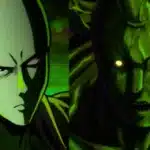Indie music has become a vibrant and influential force in the global music scene, offering an alternative to the more polished, commercialized mainstream sounds. Over the years, this genre has steadily grown, transcending its niche origins to capture the attention of both listeners and industry professionals alike. What makes indie music so appealing is its commitment to authenticity and artistic expression. Independent musicians have the freedom to explore unconventional soundscapes, experiment with diverse genres, and craft lyrics that resonate on a deeply personal level, often providing a more raw and relatable experience for their audience.
This emphasis on artistic freedom has paved the way for a new generation of indie artists, each bringing something distinct to the table. These musicians are not afraid to defy expectations and step outside of traditional musical structures. Whether it’s through the blending of genres like indie-folk, electronic, or alternative rock, or through using innovative production techniques, indie music continuously evolves, pushing the boundaries of creativity. As a result, these artists are not only carving their paths but also reshaping the landscape of modern music by inspiring listeners to seek out new, exciting sounds.
The rise of indie music has also been fueled by the increasing accessibility of digital platforms, which allow independent artists to reach global audiences without the backing of major record labels. Social media, streaming services, and music-sharing platforms have made it easier for talented artists to gain visibility, bypassing traditional barriers to entry. As a result, many rising indie artists can build a dedicated fanbase and gain recognition through word-of-mouth, live performances, and viral success. This shift has given indie music a larger, more diverse audience than ever before, as listeners look for fresh and unique sounds that stand apart from the mainstream. From introspective singer-songwriters to genre-bending experimentalists, the indie scene continues to thrive, offering a platform for rising talents to showcase their creativity and originality.
The Rise of Indie Music Artists
Indie music, short for independent music, refers to songs and albums produced without the support of a major record label. It’s a genre known for its freedom and authenticity, often allowing artists to express their personal, artistic visions. In recent years, the rise of digital platforms like Spotify, Bandcamp, and SoundCloud has provided indie artists with an unprecedented opportunity to showcase their music to a global audience. Indie music is now more accessible than ever, with artists from diverse backgrounds and regions coming together to create new sounds that cross genres and cultural boundaries. Whether you’re into folk, rock, pop, electronic, or experimental genres, indie music offers something for everyone.
Indie Music: A Fresh Alternative
Indie music has evolved from a niche genre to a dominant force in the music industry, offering a refreshing alternative to mainstream trends. This genre emphasizes artistic freedom, allowing musicians to craft authentic, experimental sounds free from commercial pressures. As the music landscape diversifies, indie artists stand out by creating music that resonates deeply with listeners. Their innovative approach to songwriting and production allows them to bring unique, original music to the forefront. Indie music is a testament to the power of creative independence in an ever-evolving industry.
The Digital Revolution: Empowering Indie Artists
With the rise of digital platforms such as Spotify, SoundCloud, and Bandcamp, indie artists now have direct access to a global audience. These platforms have leveled the playing field, giving independent musicians the tools to share their music without the need for a major record label. The ability to upload, distribute, and promote music directly to listeners has revolutionized the indie music scene. As a result, artists from various genres and regions can now showcase their work on a global stage. This digital shift has also led to more niche genres gaining popularity, allowing for greater diversity in music.
Diverse Sounds: A Genre for Every Taste
One of the most exciting aspects of indie music is its diversity. Indie artists experiment across multiple genres, creating unique sounds that blend elements from different musical styles. Whether it’s indie rock, pop, folk, electronic, or experimental, indie music caters to a wide range of tastes. Artists draw inspiration from global musical traditions, leading to a fusion of cultural influences and fresh perspectives. This genre’s flexibility has allowed it to appeal to fans of all backgrounds, with music that is accessible yet innovative. Indie music is a melting pot of genres, giving listeners new experiences with every track.
Breaking Boundaries and Cross-Genre Creativity
Indie music is all about pushing boundaries and defying conventions. The genre encourages artists to explore new territories, blending different musical traditions and even creating sub-genres of their own. Artists experiment with sounds, from traditional acoustic to synthetic and electronic, often blending the two. This freedom to cross genre boundaries has resulted in the creation of hybrid styles that challenge listeners’ expectations and open their ears to new possibilities. With such openness to creative freedom, indie music continues to redefine what popular music can be.
The Indie Movement: A Global Phenomenon
Indie music is no longer confined to a specific region or demographic. With the rise of social media and music-sharing platforms, indie artists from all over the world can connect with international audiences. From the bustling cities of the US to emerging music hubs in Africa, Asia, and Latin America, the indie scene is a global community. Artists no longer face geographic limitations when it comes to sharing their music, and listeners have the opportunity to explore diverse sounds from every corner of the globe. The rise of the internet has made indie music a truly international phenomenon.
Supporting Indie Artists: The Role of Fans
Fans play a crucial role in the success of indie artists, as they are often the driving force behind the promotion and growth of an artist’s career. With limited resources compared to major label-backed musicians, indie artists rely heavily on word-of-mouth, social media support, and live performances to grow their fanbase. Platforms like Patreon and Kickstarter have also allowed fans to directly support artists, helping them fund projects and continue producing music independently. The relationship between indie artists and their fans is deeply personal, with mutual support fueling the growth of the artist’s career.
Live Performances: The Heart of Indie Music
Live performances are a vital part of the indie music scene. For many indie artists, playing live is a way to build a personal connection with their audience and showcase their talents in a raw, unfiltered environment. Concerts and tours are often key revenue streams for independent musicians, as they have the opportunity to sell merchandise and promote their latest work. Fans appreciate the intimate, often more authentic experience of seeing indie artists perform in smaller venues, where the energy is palpable. These live performances help artists create loyal followings and establish their place in the indie music world.
Future of Indie Music: Where Is It Headed?
As we look to the future, indie music shows no signs of slowing down. With the continuous rise of digital platforms and the growing popularity of streaming, indie artists are set to remain at the forefront of musical innovation. As new technologies emerge, musicians will have even more ways to experiment with sound and interact with their fans. The increased accessibility of music production tools has democratized the creation of music, enabling anyone with a passion and talent to make their mark. The future of indie music is bright, as it continues to push the boundaries of creativity and connect artists with listeners in meaningful ways.
| Trend | Description |
| DIY Production | Many indie artists now produce their music independently, using affordable technology to create high-quality tracks. |
| Genre Fusion | Indie artists often blend various genres, creating unique and experimental sounds that can’t be categorized easily. |
| Social Media & Streaming | Platforms like Instagram, TikTok, and YouTube help indie musicians connect directly with fans and gain visibility. |
| Music Video Innovation | With limited budgets, indie musicians often produce innovative, creative music videos that tell stories or reflect personal narratives. |
| Crowdfunding & Fan Support | Artists leverage crowdfunding platforms like Kickstarter to finance their music and build a loyal fan base. |
Indie Artists Making Waves in 2025
the indie music scene continues to evolve with a fresh wave of talent redefining the genre’s landscape. Emerging artists are increasingly focused on authenticity, blending personal storytelling with innovative soundscapes that resonate with diverse audiences. As traditional barriers in the music industry fade, these artists are gaining more visibility through platforms like Spotify, Apple Music, and TikTok. With a focus on creativity and independence, indie musicians are shaping the future of music by blending genres and experimenting with unconventional instruments and techniques.
Several new faces are making a significant impact this year, offering listeners an exciting range of styles and experiences. These rising stars are capturing attention not only for their unique sounds but also for their ability to create deeply emotional and personal music that speaks to a global audience. From indie pop sensations to boundary-pushing experimental artists, 2025 is poised to see the continued rise of indie music as a transformative force in the broader music industry. Whether it’s through heartfelt lyrics, innovative production, or genre-blending experimentation, these artists are reshaping the way we experience music in the modern age.
- Ella Henderson: Ella Henderson, known for her hauntingly beautiful voice and emotional ballads, has grown from a reality TV star into an indie sensation. Her music blends pop, soul, and folk influences, which resonates with listeners seeking something heartfelt and genuine.
- Ben Howard: Ben Howard is an artist known for his raw and emotive folk-rock sound. His ability to craft poignant lyrics paired with experimental soundscapes makes him one of the standout indie musicians of the year.
- Tash Sultana: Tash Sultana’s mesmerizing, multi-instrumental performances and blend of psychedelic rock and soul have garnered her an international following. Her one-person band approach makes her stand out in the indie music scene.
- Phoebe Bridgers: Phoebe Bridgers has been hailed as one of the best indie artists of her generation. With her introspective lyrics and alternative rock sound, she’s captured the hearts of fans worldwide. Her music offers a raw glimpse into the human experience.
- Khruangbin Khruangbin’s fusion of soul, funk, and Thai rock has gained them a global fanbase. Their instrumental, genre-blurring sound draws listeners from all corners of the world, and their live performances are celebrated for their energy and groove.
How Indie Artists Are Breaking Away from Mainstream Norms
One of the defining features of indie music is its rejection of mainstream trends. Indie artists aren’t bound by the expectations set by major record labels or the need for radio play. Instead, they focus on creating music that reflects their vision, often experimenting with unconventional sounds or controversial topics. This approach allows for a greater diversity of voices in the music industry and has led to a flourishing of artistic expression. Indie music artists often tackle complex and personal issues in their music, using their platforms to speak about societal issues, mental health, and relationships. This freedom to explore uncharted territories and express vulnerability is part of what makes indie music so powerful and relatable to audiences.
The Role of Digital Platforms in Amplifying Indie Music
digital age, indie artists are no longer reliant on traditional music industry gatekeepers. Digital platforms have democratized music distribution, allowing independent musicians to gain recognition and grow their fanbases organically. Platforms like Spotify, Apple Music, and Bandcamp provide artists with the tools to release their music to global audiences without major label backing. Social media platforms like Instagram, TikTok, and YouTube have become essential tools for marketing and connecting with fans. Many indie artists use these platforms not just to promote their music, but to create an authentic narrative around their journeys, fostering a sense of intimacy and community with their followers.
The Power of Live Performances
While digital streaming and social media presence are vital for indie artists, live performances remain a key part of their success. Touring and playing in intimate venues allows indie artists to build personal connections with their fans. These live shows often reflect the raw, unpolished energy that indie music is known for, providing an opportunity for fans to experience the music in a way that goes beyond recorded tracks. Indie artists are known for their engaging and intimate live performances, often experimenting with their setlists, incorporating audience interactions, and improvising during shows. These concerts offer a glimpse into the true essence of the artist, where music and personal expression meet.
Challenges Faced by Indie Music Artists
Despite the many opportunities for indie artists in the digital age, the path to success is not without challenges. For many indie musicians, the financial burden of producing music, touring, and marketing can be overwhelming. Without the support of a major label, many artists rely on crowdfunding or personal savings to fund their projects. Moreover, the oversaturation of music on streaming platforms can make it difficult for indie artists to stand out. The constant flood of new music can overwhelm listeners, making it harder for emerging talent to gain traction and find their audience. The indie music community, however, has proven to be resilient, with artists using creative strategies to overcome these obstacles and make a name for themselves.
The Future of Indie Music
As we look ahead to the future of indie music, it’s clear that the genre will continue to evolve and shape the music industry in exciting new ways. With a growing focus on diversity, inclusivity, and personal expression, indie artists are pushing boundaries and exploring new creative avenues. New technologies, social media strategies, and innovative marketing techniques will help indie artists connect with fans and create music that resonates on a global scale. The continued growth of independent music scenes across the globe suggests that indie artists will remain at the forefront of innovation in music, offering new sounds, stories, and experiences for years to come.
- Diversity and Inclusivity: The future of indie music is set to embrace even greater diversity and inclusivity, with artists from all walks of life being encouraged to share their personal experiences and cultural backgrounds through their music. As the genre continues to break down barriers, listeners can expect to hear an array of sounds and voices that reflect a broader spectrum of identities, ultimately creating a richer and more dynamic music landscape that resonates with a global audience.
- Technological Advancements: With rapid advancements in technology, indie music will continue to evolve through the use of cutting-edge tools and platforms that push the boundaries of creativity. AI-powered music production, immersive virtual reality performances, and blockchain-based distribution methods will give indie artists more freedom than ever before to create and share their work. These technological innovations will enable artists to experiment with new sounds, alter the way music is consumed, and engage audiences in exciting, interactive ways.
- Social Media and Digital Platforms: Social media and digital platforms will remain essential to the growth and success of indie artists. As platforms like TikTok, Instagram, and YouTube continue to dominate, indie musicians will harness these tools to build organic fan communities and share their music directly with listeners worldwide. The rise of algorithm-driven recommendations and viral trends will enable new indie artists to find a global audience quickly, while allowing for more personalized connections between artists and fans, thereby reducing the power of traditional gatekeepers in the music industry.
- Increased Independent Distribution: The shift toward independent distribution will only grow stronger in the coming years, as more artists choose to bypass traditional record labels and utilize platforms like Bandcamp, SoundCloud, and DistroKid to release their music on their terms. This independence will allow artists to maintain full control over their creative work, marketing strategies, and financial success, ensuring that their art stays authentic to their vision without external pressures. As a result, indie music will continue to thrive, offering listeners more original, unfiltered content from musicians around the world.
- Focus on Personal Expression: Personal expression will remain at the heart of indie music’s evolution, as artists continue to push the boundaries of lyrical themes, sounds, and production styles. Without the constraints imposed by commercial interests, indie musicians will have the freedom to explore deeply personal and vulnerable topics, from mental health and social issues to love and identity. This focus on authenticity and emotional depth will create music that resonates with listeners on a profound level, forming meaningful connections between artists and fans and giving a voice to those who might otherwise go unheard.
- Global Indie Music Scene: The indie music scene will become increasingly interconnected and global in scope, as artists from different countries and cultures collaborate and share their work across international platforms. The fusion of various musical styles, languages, and genres will create a melting pot of innovation, where influences from Africa, Asia, Latin America, and Europe merge to form entirely new sounds. This global exchange of ideas will not only expand the diversity of indie music but also offer fresh opportunities for artists to grow their fanbases across
Wrapping Up
The indie music scene is not just evolving; it’s revolutionizing the music industry by offering an authentic alternative to mainstream trends. This genre has become a movement, prioritizing individuality, creativity, and self-expression. Indie artists are continuously breaking boundaries, proving that music can be more than just entertainment—it’s a form of storytelling and connection. Whether it’s emerging talent or seasoned musicians, these artists are captivating listeners with music that resonates with real emotions and experiences, often reflecting on personal journeys and societal issues.
Looking ahead, indie music is set to thrive even more with groundbreaking innovations in sound and technology. The diversity and freedom that characterize the indie scene will continue to foster the rise of new stars, each bringing their unique contribution to the musical landscape. As more artists gain recognition outside the constraints of traditional record labels, the genre’s reach will grow globally, paving the way for exciting new trends. Keep following the indie music wave and enjoy the captivating sounds of tomorrow’s music stars who are reshaping the future of the industry.
FAQs
What makes indie music different from mainstream music?
Indie music is different from mainstream music in that it is typically produced without the support of major record labels. Indie artists have more freedom to create music that aligns with their vision, rather than being constrained by commercial interests. This often results in more experimental, raw, and unique sounds.
How do indie music artists make money?
Indie music artists generate income through a variety of sources, including streaming royalties, live performances, merchandise sales, crowdfunding, and licensing deals. Many artists rely on multiple revenue streams to sustain their careers and grow their fanbases.
Is it possible for independent musicians to thrive without a record label?
Yes, many indie artists have found success without the backing of a major record label. With the rise of digital platforms, artists can distribute their music globally, build their fanbase, and promote their music through social media. Many successful indie artists have carved out their niche and gained recognition without traditional industry support.
How do indie artists promote their music?
Indie artists promote their music through a combination of social media, streaming platforms, live shows, and collaborations with other artists. Social media platforms like Instagram, TikTok, and YouTube play a significant role in helping artists connect with their audience, while live performances offer opportunities to engage with fans directly.
What obstacles do independent musicians encounter in the music business?
Indie artists face challenges such as limited financial resources, difficulty standing out in a crowded music market, and the struggle to balance creativity with commercial success. The oversaturation of music on streaming platforms can also make it difficult for new artists to get noticed.
How can I discover new indie music artists?
You can discover new indie music artists by exploring platforms like Spotify, Bandcamp, SoundCloud, and YouTube. These platforms feature curated playlists and recommendations based on your listening habits. You can also follow indie music blogs and attend live shows to find fresh talent.
What is the future of indie music?
The future of indie music looks bright, with continued innovation and diversity at its core. As digital platforms and social media evolve, indie artists will have even more opportunities to reach global audiences, experiment with new sounds, and build loyal communities. The genre will likely continue to push boundaries and inspire future generations of musicians.










